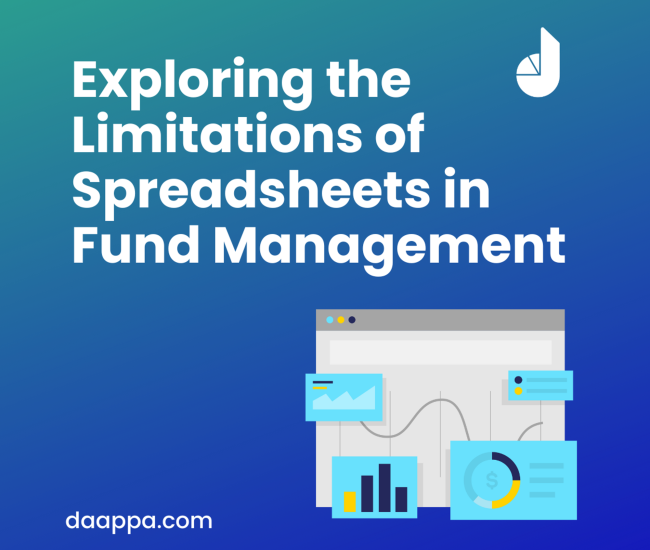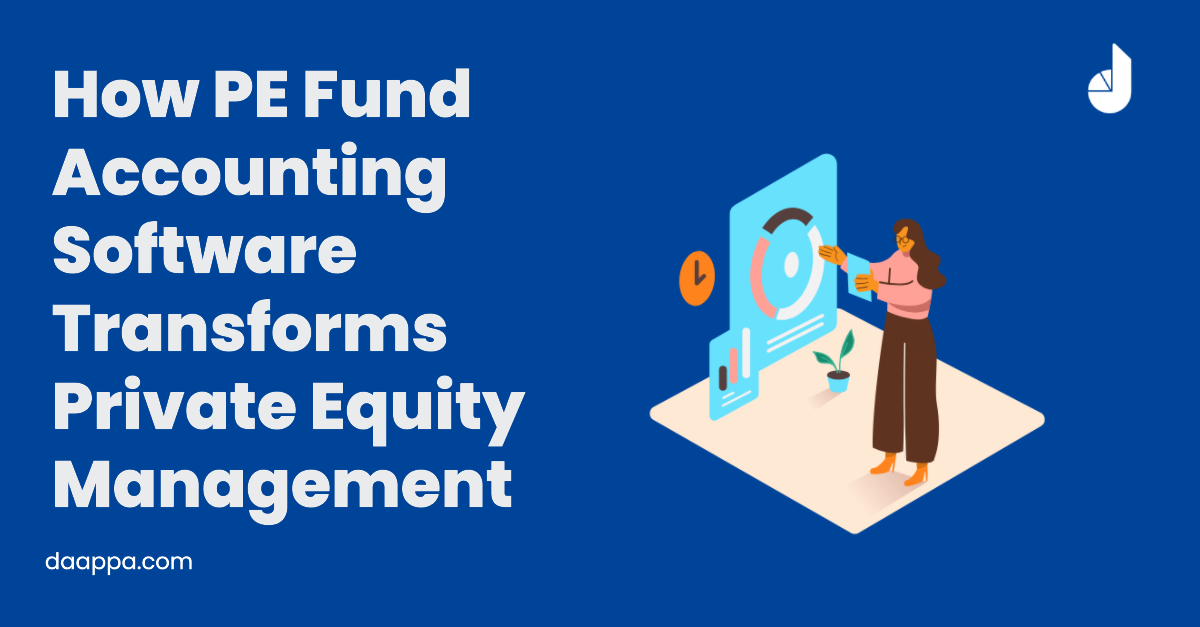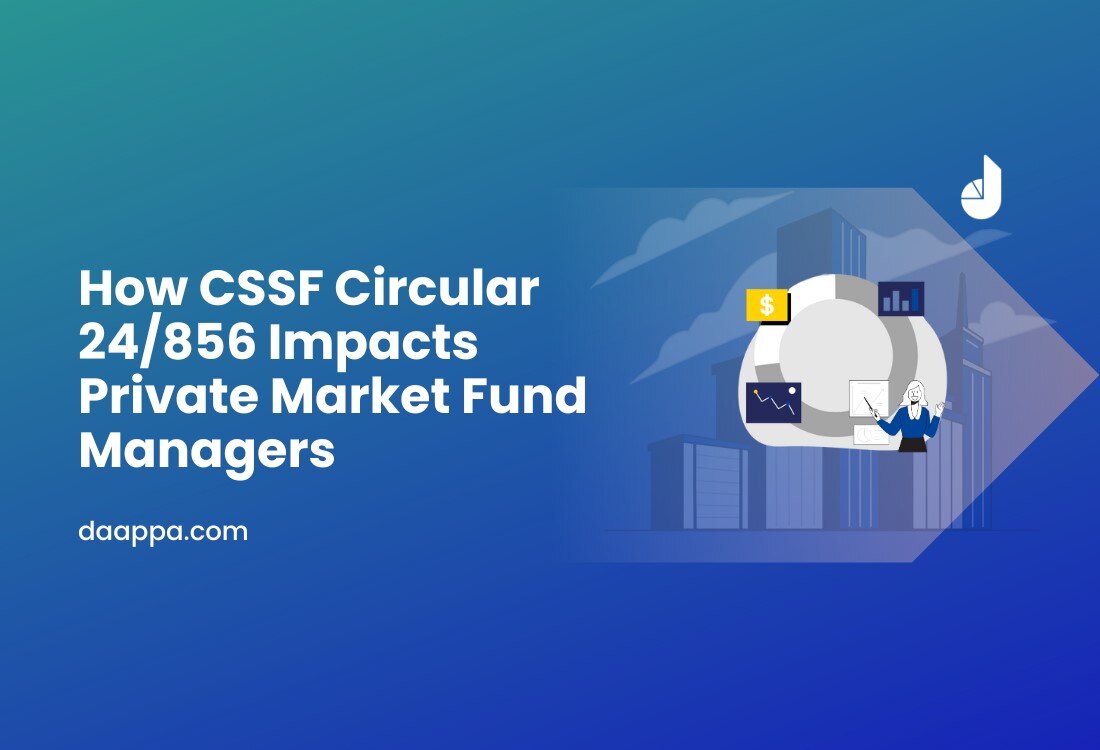How PE Fund Accounting Software Transforms Private Equity Management
In today’s competitive private equity (PE) landscape, precision and performance are inseparable. Fund managers are under mounting pressure to deliver transparency, maintain...

In private asset fund management, both spreadsheets and specialised software play crucial roles. Spreadsheets offer flexibility for specific tasks, while private asset fund management software provides a robust solution for complex, scalable, and secure data management. However, reliance on spreadsheets for primary data management has led to significant issues, including regulatory scrutiny and operational inefficiencies. Here are six reasons why dedicated private asset fund management software outperforms traditional spreadsheets for handling fund data and accounting.
Manual data entry in a fund data spreadsheet can lead to significant errors, affecting fund accounting accuracy. A single mistake can cascade through multiple sheets, leading to flawed financial reports. For instance, the Reserve Primary Fund's "breaking the buck" incident in 2008, where a single error in the valuation of Lehman Brothers' debt contributed to a loss of investor confidence, is a stark reminder of such risks. Private asset fund management software automates data entry and calculations, reducing the risk of human error and ensuring data accuracy.
As funds grow, the volume of data increases and a fund data spreadsheet struggles to handle large datasets efficiently. This often results in slow performance or crashes, hindering timely decision-making. In one case, a large private equity firm faced significant delays in reporting due to spreadsheet crashes, impacting their decision-making process. Private asset fund management software is designed to scale seamlessly with growing data volumes, ensuring consistent performance and robust analysis capabilities.
Instances of unauthorised access to confidential investor information have been reported, leading to regulatory investigations. For example, a data breach at a major hedge fund was traced back to poorly secured spreadsheets, resulting in substantial fines and reputational damage. Private asset fund management software offers enhanced security protocols, such as encryption, multi-factor authentication, and access controls, protecting confidential information and ensuring data integrity.
Ensuring compliance with regulatory requirements using a fund accounting spreadsheet can be cumbersome due to the lack of audit trails and real-time updates. Regulatory bodies have raised concerns over the inability to provide accurate audit trails from spreadsheets, resulting in legal penalties and financial losses. The UK Financial Conduct Authority (FCA) has frequently flagged inadequate spreadsheet controls as a significant compliance risk. Private asset fund management software addresses these issues by offering built-in compliance features that simplify adherence to regulations and maintain detailed audit trails, ensuring a streamlined and compliant process.
Spreadsheets pose collaboration challenges, as multiple users editing a single file can lead to version control issues and data conflicts. This has been a common problem in firms where teams work across different locations. Private asset fund management software offers real-time collaboration features, enabling teams to work efficiently and maintain data consistency.
The use of complex spreadsheets often relies heavily on specific individuals who create and manage them. If these individuals leave the firm, it can result in significant disruptions and increased risk. A notable example includes a private equity firm that faced operational challenges when a key analyst left, leaving behind intricate spreadsheets that no one else could fully understand. Private asset fund management software mitigates this risk by providing a standardised, user-friendly interface that can be managed by multiple users, ensuring continuity and reducing dependency on any single individual.
While spreadsheets have limitations, they do have specific uses in private equity. Certain activities, such as the calculation of carried interest, equalisation, and amending data exports for imports, sometimes require the flexibility that spreadsheets offer. However, they should be used sparingly, never as a primary data store, and only for tasks that can't be systemised and automated.
Transitioning to daappa’s private asset fund management software addresses the limitations of traditional spreadsheets by reducing errors, enhancing scalability, security, compliance, and collaboration. While Excel is useful for certain data analysis tasks, it is not suitable as a primary data repository due to its inefficiency, risk, and lack of scalability. Private capital firms need a robust data platform like daappa, which consolidates data from various sources, offering a seamless, secure, and scalable solution. Embracing private asset fund management software is no longer a choice but a necessity for staying ahead in the competitive financial landscape. Transition to daappa’s solutions and experience the difference.

In today’s competitive private equity (PE) landscape, precision and performance are inseparable. Fund managers are under mounting pressure to deliver transparency, maintain...
.png)
Amid rising operating costs and a shortage of experienced talent in Europe’s financial services sector, daappa Ltd and OneNexus Outsourcing Services LLP announce a strategic...

With the introduction of CSSF Circular 24/856 on 1 January 2025, private market fund managers operating in Luxembourg face stricter oversight on NAV calculation errors, investment...